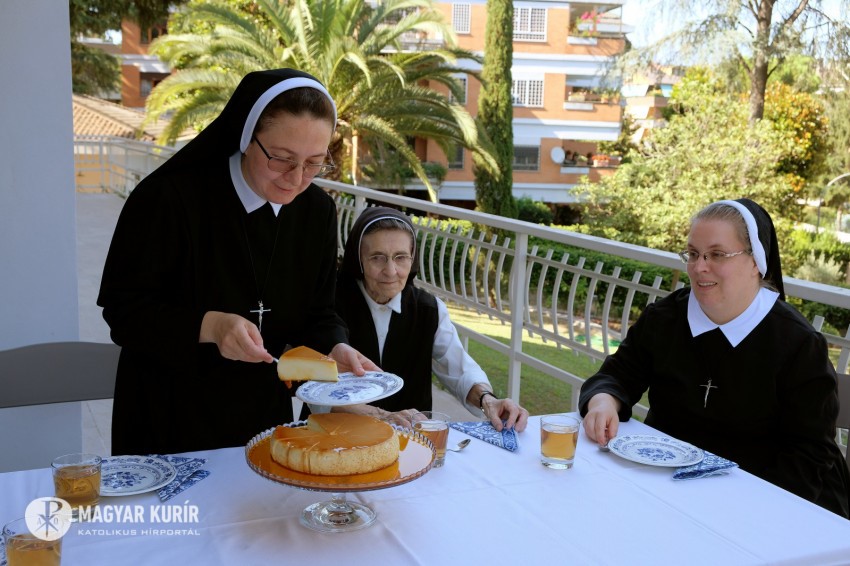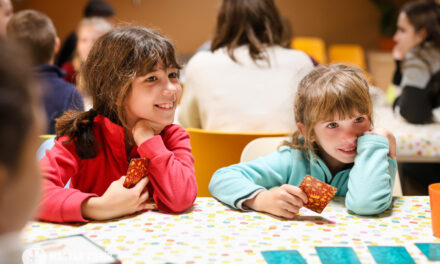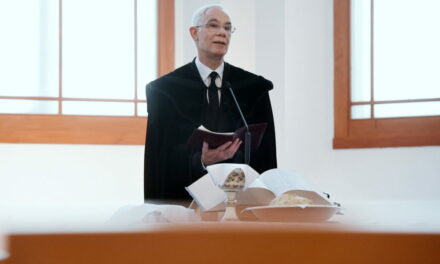This is how Hungarian Catholics cook. The publication 52 weeks – 52 recipes presents our Catholic chief pastors, priests, and monks while cooking. On the pages of the volume, we can also meet Sister Demeter M. Teodora, who, as a member of the Congregation of Sisters Named for the Divine Redeemer, lives in the Villa Mater Redemptoris pilgrimage house in Rome, where she receives guests arriving in the Eternal City. We share some details from the interview with him, which can be read in the Magyar Kurír.
– The above-mentioned book also talks about childhood food. What memories do you have of family meals?
- Sunday lunch was always important to us when I was a child. One of the first memories of my life is that my parents both worked, so I was at home with my grandmother most of the time. My sister lived in the city during the week because she went to school there. On weekends, however, the family was always together. Sunday lunch was very festive. The table was set in the great room, with a white tablecloth and festive plates. My mother often cut up a hen or chick, fried it together, and had French fries with it. Of course, the broth could not be left out either. The two thighs always belonged to the two daughters. My mother ate the wing. We thought it was because he would give us plenty, but recently he admitted that it is his favorite. At the end of the lunch, a delicious cake was placed on the table. My mother could make a very good custard, but she also often made the floating island in the recipe book.
Among the people of Székely, it is very popular to offer sauces and sauces with the meat, for example, we had cherry sauce and dill sauce. Or tarragon, which the Szeklers often use.
Sunday lunches are still fond memories for me, it's good to think back to how the whole family sits together at the table.
"When and how did you decide to become a monk?"
"I realized early on that I wanted to be a religious sister." I didn't know any other female monks, except Sister Ágnes, who is now our provincial superior. He came home a couple of times in the summer, but I didn't dare to talk to him. The truth is, I didn't even know exactly what the nurses did. Maybe it's just that they pray all day. Finally, after five years, I spoke to Sister Ágnes. His first question was whether I had told my parents about this desire. I told him no. Don't you think you should tell them that? - asked. That's what I said after all. After another two years, in November 1999, I went to the monastery with my father to start my new life. The candidate period was half a year, then the novitiate was two years.
"How did you get to Rome?" Did you think about that when you signed up for the order?
– As soon as I took my first vow, my first mission was to Rome. I admit, I wasn't happy about it. Before that, I had to study Italian for a year, although they didn't tell me why. I took the vow, and then Mother Rita, the Provincial Superior, called me and said: you are going to Rome in two weeks. I cried for two weeks. Then on August 5, 2002, the day of Our Lady of the Snows, I arrived in the Eternal City. To this day, I remember it exactly, because it was then that I saw for the first time how rose petals were scattered on the feast at the basilica where the snow miracle happened: at Santa Maria Maggiore.
I was unhappy for a long time, but now I would cry for two weeks if I had to leave this city.

Photo: László Bókay
"What kind of food do you like, Sister Teodora?"
- I really like ice cream, but as a Székely, salad beans, i.e. bean soup made with salad, is also one of my favorites. In the summer, when I go home, my mother asks me what to cook every day. I always ask for Székely food, but one without meat.
This is how Hungarian Catholics cook. The publication 52 weeks – 52 recipes is distributed by Magyar Kurír and is available online bookstore
By purchasing the book, the Catholic Charities also supports the Szent Erzsébet Otthona in Ipolytölgyes and the Spiritual Rehabilitation Home in Bakonyszücs.
László Bókay's entire article in Magyar Kurír .












